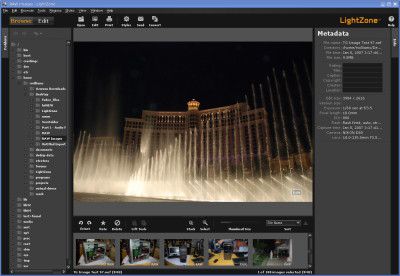From our front-page news:
Top lists are a dime a dozen, there's no secret in that. But it's a rare occasion when I take a look at one and actually find something new I didn't know about before. The latest top 20 from Tech Radar is one such article though, as they choose a variety of different Linux applications that we supposedly can't live without. Top lists are of course subjective, but hey, if you can learn about a new app you didn't know about before, then there's no reason to complain.
The first application listed in the list actually surprised me, because it looked like Adobe Lightroom. I've been looking for such an application for a while, so to see there's actually a Linux alternative surprised me. Called LightZone, the goals are the same as Lightroom is for Windows and Aperture is for OS X, to give you full control over your RAW photography. It accepted my Nikon .NEF without issue, and so far, it seems like a solid offering.
Like LightZone though, not all applications listed here are completely free, although they do seem to cost far less than the Windows competitors. Having been a full-time Linux user for quite some time, I'm surprised to see that half of the list are applications I've never even heard of. How about Stellarium, a Google Earth replacement? Tux Guitar, a tab creator for guitar players? The only application in the list I actually use everyday is Bluefish, an open-source editor... the same one I used to write this news post. See, Linux doesn't lack in software at all, and lists like these prove it.
Freshly minted as a version 1.0 product, Bluefish is a powerful text editor for programmers. Billed as "extremely lightweight", the program uses about half the memory of more well-known editors, such as Quanta, so it could run just fine in a lightweight distro - for example, Fluxubuntu - or alongside programming environments such as Eclipse. It also loads files quickly: in a test, we opened ten HTML files in almost the blink of an eye, even though they were fairly complex.
Source: TechRadar
The first application listed in the list actually surprised me, because it looked like Adobe Lightroom. I've been looking for such an application for a while, so to see there's actually a Linux alternative surprised me. Called LightZone, the goals are the same as Lightroom is for Windows and Aperture is for OS X, to give you full control over your RAW photography. It accepted my Nikon .NEF without issue, and so far, it seems like a solid offering.
Like LightZone though, not all applications listed here are completely free, although they do seem to cost far less than the Windows competitors. Having been a full-time Linux user for quite some time, I'm surprised to see that half of the list are applications I've never even heard of. How about Stellarium, a Google Earth replacement? Tux Guitar, a tab creator for guitar players? The only application in the list I actually use everyday is Bluefish, an open-source editor... the same one I used to write this news post. See, Linux doesn't lack in software at all, and lists like these prove it.
Freshly minted as a version 1.0 product, Bluefish is a powerful text editor for programmers. Billed as "extremely lightweight", the program uses about half the memory of more well-known editors, such as Quanta, so it could run just fine in a lightweight distro - for example, Fluxubuntu - or alongside programming environments such as Eclipse. It also loads files quickly: in a test, we opened ten HTML files in almost the blink of an eye, even though they were fairly complex.
Source: TechRadar

